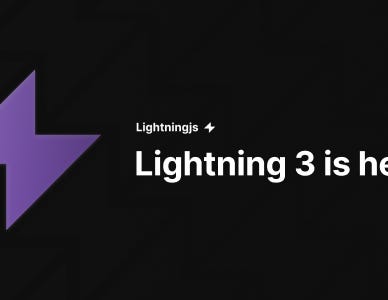Using Streaming Analytics for the best quality of experience
Getting the playback to work is relatively easy. Keeping it working properly through all times of the day, with all the ups and downs in user numbers; might be much harder. That’s where streaming analytics come into play! In this blog, we take a look at leveraging streaming analytics to get the best quality of experience for streaming apps.
How streaming analytics tools work
Before we dive into specific use cases, it’s good to first look at how streaming analytics tools actually work. Because you normally hook them up to your player and then the magic just happens. But what do they actually do?
When we send a lot of data to streaming analytics tools, they make all sorts of calculations based on the data sent. Your app is sending all sorts of events, that explain what is currently happening with the video player. You will send when the video has started loading, when it has started playing, when it starts buffering in the middle — even when an error happens, or when a user exits out of the player before the video has started. All of these data points are then thrown together in a user session, which is then combined with all other user sessions — forming one big report of all of your user sessions.
With this data, the streaming analytics tool will then be able to create things like dashboards, reports and even alerts. It’s all about this data that makes streaming analytics tools able to provide their value. How well they are able to interpret the data is key. But what kind of interpretations and value is important here then?
Actionable Insights
First and foremost, at least for me, is the need for actionable insights from any streaming analytics tool we might use. Streaming analytics tooling take in a massive amount of data from all times of the day. Not only that, they also (should) have a good insight into many differentiators that make certain sessions different from one another. For example, there is going to be a difference between Android and iOS mobile phones — and we want to know and be able to see that difference.
With this big bag of data, streaming analytics tools can show us whenever anomalies arise. Is a new release on Android giving a lot higher buffer rate? It can tell us this happens, based on the data that it’s receiving from our players. And there are a whole lot more use cases/actionable insights like that. To name a few:
- Every day around 18:00 there are more playback errors. An indicator that we might not be able to scale up quickly enough for the 18:00 news. We need to do something about this and scale up quicker before 18:00, as we can predict the increase in usage.
- Since version 1.5.2, we see a 20% increase in video views. The release worked great! The new user interface has really worked in driving more users to watch content. Of course, this goes both ways with view decreases too.
- For the past 15 minutes, we see a sharply increased rebuffer rate of 20% with one of our CDNs. Something seems to be up with one of the CDNs we use in our multi-CDN setup. It would be good to reach out and see what is happening, while we move all traffic over to a CDN we know that works in the meantime.
- In the past 5 minutes, 100% of our traffic has errored. Probably a big issue in the chain — is AWS down? You might have other monitoring for this, too.
All of these actionable insights come directly from the events that you have sent in from all your user sessions. And it’s exactly these actionable insights that can help you get the best out of your streaming app. You can predict issues and prevent them; make actions based on errors (with notifications through email, slack, or even phone calls); and overall better the experience by seeing what the data does, based on your application changes.
Dashboarding, reports and KPIs
When you have all that data flowing in, it’s an easy step towards making great dashboards, reports and defining and seeing your key performance indicators. You have access to all the data that you’ve actually sent in. Whether it’s the type of device your users use, the operating system, the type of video content, or the DRM used — I can go on and on (because a lot of data is sent!), it’s all visible in the dashboards and reports from streaming analytics tools. You can see in the blink of an eye how you’re doing with your most important KPIs. To give you some examples of what dashboards could look like:
Example tools
Now that you know how streaming analytics tools work, you now have the difficult job of picking the right one for you. While most tools do the same thing, there are of course small differences that you’ll run into when using them. Especially the upcoming months and years will be interesting, as we see AI and ML making a bigger impact on all of our technology. If we look at the specific streaming analytics tools out there, there is a rough split of two sides. On the one hand, you have the tools that are included with commercial video players out of the box. Next to that, you have the stand-alone analytics tools. Down below you can find a subset of them, which should give you a good starting point in your journey towards better streaming analytics (do tell if I missed an important one).
Standalone
- Conviva
- Mux Data
- MediaMelon SmartSight
- Adobe Analytics
- NPAW Youbora
- Agama Client Device Monitoring
- Brightcove Audience Insights (formerly Wicket Labs)
- Bitmovin Video Analytics (not exclusive to Bitmovin Player)
- Bradmax Video Analytics
- Jump Insights
Included with video player
Conclusion
Streaming analytics tools play a crucial role in optimising the performance of streaming apps and ensuring a seamless user experience. By collecting and analysing data from video player events, these tools provide actionable insights that help identify issues, predict scalability challenges, and measure the impact of updates and changes. With the ability to use dashboards and reports, and track key performance indicators, streaming analytics tools empower developers and operators to make data-driven decisions and proactively address any issues that may arise.
There is a plethora of tools available. Both available as standalone for and video players, as well as integrated by default with some video players, you should be able to find a streaming analytics tool that matches your needs. Still, the next few years are definitely going to be interesting, as artificial intelligence and machine learning make their way into these tools.
By the way
Interested in learning more about streaming analytics, SmartTV or other OTT topics? Reach out via matthijs.langendijk@wearetriple.com, or via my LinkedIn. You can also find some of my other blogs down below for more info. Thanks for reading!









